Stripping the rust
A sculptor hones her senses – even ones she didn’t know she had
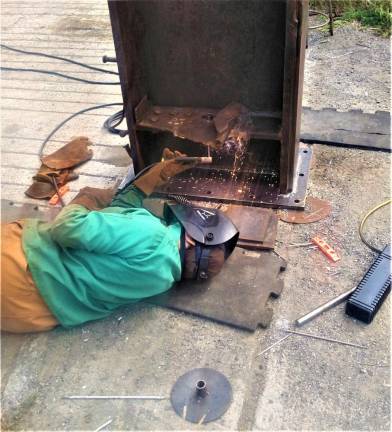
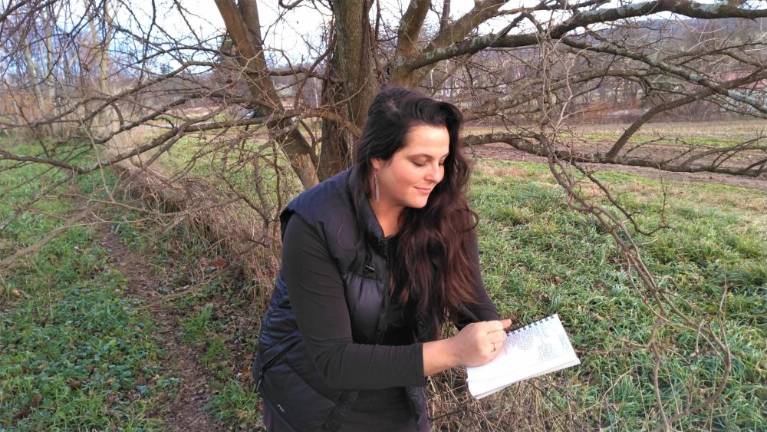
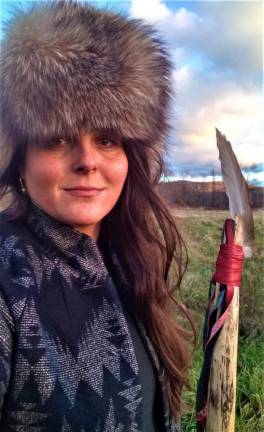
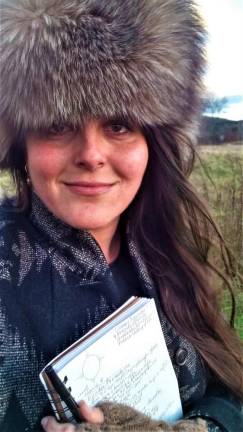
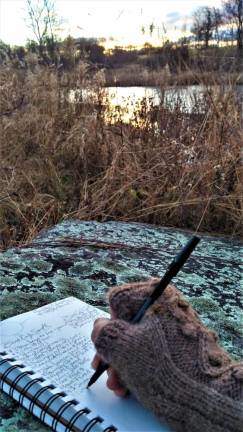
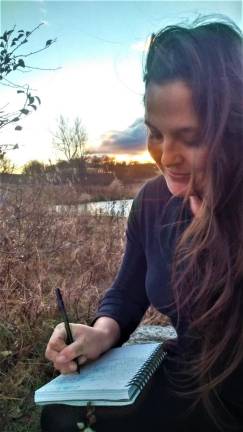
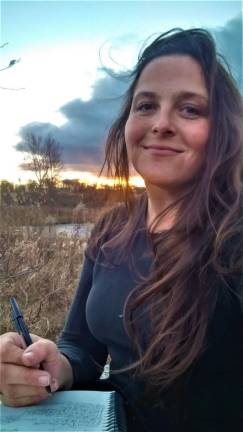
Amy Lewis Sweetman’s childhood home in Cornwall, sandwiched by Schunnemunk Mountain and Black Rock Forest, had views of Storm King Art Center from her parents’ bedroom. She remembers being four years old, asking about the orange sculptures she could see from the window.
She went on to study architecture in Rome, design buildings in Dubai, created Coca Cola commercial sets in L.A., and build larger-than-life art installations for Burning Man in Nevada. But for Sweetman, “there’s certain things about the Hudson Valley and Orange County that – I don’t know how to say it – it’s just in my bones.”
Eventually, she came home and started her own business... creating sculpture. “I grew up looking at that, so it wasn’t such a big jump to end up working in metal – even though that was really not the intended path,” she said with a laugh.
You were having a good time designing film sets in L.A. before you moved back home a decade ago. What compelled you to leave that world behind?
That was super fun because I got to use hands-on architectural skills for that. I would make the entire environment; we did a Coca Cola ad, we did a whole bunch of graduate films for USC and UCLA.
The one thing I really didn’t like about it, which prompted me to leave that realm and start my own practice, was the fact that all of the materials at the end of each film set were thrown away. And that was totally unacceptable to me. I would try and save every single thing I could until my housemates started saying: “You have to stop, you have to stop. You cannot bring home any more two by fours.”
Talk about your art practice.
There are always side projects but primarily, I use antique farm equipment as my medium. This year, I was commissioned by the Village of Warwick to create the 9/11 Memorial Sculpture Garden. They had an I-beam from the World Trade Center at their DPW for like 19-and-a-half years. From March to September I was working on that, and we dedicated it on September 11.
What’s the most exciting project you’re working on?
Winter workshops on Saturdays. They’re going to be called Nature Journaling with Agrisculpture Amy. Something that I do every single day – a huge part of my life – is nature journal. Every day I will write down every single wild creature I see. I’ve been doing this for years, and sort of just for fun. But as soon as I started, I continued to do it every day and it’s something that I really love to do.
I can tell you things like: over the last 17 days, I have seen a bald eagle three different times, in three different counties. That is kind of cool information. I can tell you when the crickets last chirped at night, when the cold weather set in. I can tell you when the late juncos appeared.
So it’s not just chronicling what you see every day – you go back and read your past entries as well?
Absolutely. For me, it’s kind of like establishing reality checkpoints; ways of really acknowledging what part of the year, or season or place that we’re in.
Do you remember what inspired you to start nature journaling?
I do. My zucchinis were very wilted, it was July [2019]. So I fill up my watering can, and I’m approaching the zucchini from the house, and all of a sudden, I hear a rustling from the leaves, and a little garter snake came out. And I just stopped, and I’m sort of looking at him. And it slithers over to the zucchini, it stretches itself out in front of the zucchini.
And then it turns around and looks at me.
And I’m like: “Hmm. You’re trying to tell me something, and I’m kind of dumbstruck because I don’t know what your language is.”
But that was very unusual behavior for a snake. Normally they will just slither away. They don’t just stop and turn around and look at you for 30 seconds.
So it was kind of this beautiful moment of ignorance where I was like “What’s going on?” that really prompted me to start paying very close attention to the wild animals and what is happening in the environment immediately around me.
What has nature journaling done for you?
It sort of hones my experiential senses. The senses I use to experience the world have gotten extremely acute from doing this. I can see really far away. I can hear really far away. I notice things a lot more than I used to. And that’s been really, really cool. And for me, that’s a very direct result of simply having fun and observing and recording.
Does nature journaling tie into your Agrisculpture work at all?
It kind of played in the background. But I will tell you where that come in, in a sculptural sense. Everything feeds everything else. So these types of senses that I’ve been developing I guess, not on purpose but as a result of my nature journaling – I can sense other things.
Working on the 9/11 World Trade Center I-beam this summer... when it came to the actual production and working on it, my first task was to clean it off. It was covered in asbestos, and ashes and terrible things.
And it took a little bit of time to approach doing this, because it was such a loaded object and I could sense it. I knew it was in my studio, I knew my studio was different having this piece of metal there. But the day that I actually started cleaning it off, I’m wearing all of my protective equipment, my goggles, my ear protectors, my face mask. Everything.
And I’m wire-wheeling the piece. All of a sudden, I hear sirens.
I rip off all my gear: my glasses, my earbuds, my mask. Because I literally thought the Warwick Fire Department was in the studio’s barnyard behind me. I thought maybe the barn caught on fire. I heard it so clearly: I heard firetrucks, I heard ambulances, I heard sirens. I ripped off all my stuff, and I turned around and there’s nothing there... and I thought “Alright, weird. They probably went down West Street and I don’t hear it anymore because it’s out of range.”
So I put everything on again. And I start to wire wheel the piece again. And so clearly, I hear police sirens and ambulances and firetrucks...and I take off all my stuff and I turn around again and there’s nothing there.
And at that point I started to weep because I know what I’m hearing.
I felt like I was actually hearing vibrations that, for lack of a better word were maybe trapped inside this piece of metal. And by cleaning it off, the energy was being released from this piece, and I’m hearing echoes of energy sounds from almost 20 years ago. And I am just weeping.
I don’t know how to describe it any other way but, I know what I heard and it wasn’t the Warwick Fire Department. There wasn’t anyone there.
I asked my husband, I was like: “Did you hear – was there a big fire somewhere? Any commotion?” And he said “Nope.”
“I mean, any time, all day today?” “Nope.”
I think that certain people are more sensitive to different vibrations and different energies than others, and I think I’ve always actually had that, but I never really knew what it was or what to do with it. And I didn’t really have a way of refining it. And so I think inadvertently my nature journaling and experiences in nature, with animals and birds, has actually heightened my senses to the point where when I’m working on sculptures, I can sense what their past lives were. I can get a sense of the energy imprints that are in pieces.
And it’s totally different working with new steel: there’s no story to new steel. Yeah, it was made somewhere and shipped somewhere and I picked it up somewhere and here it is. But it’s not like a story that the older antique metal will tell you. The older antique metal will stories about the fields that they were in, or the earth or the rocks that they bumped into when they were farming.